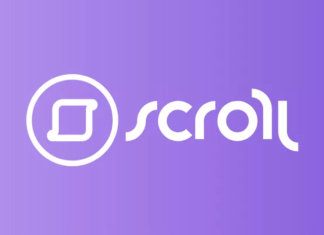Solana is a web-scale blockchain that offers scalability and security to decentralized applications and marketplaces. The network currently supports 65,000 transactions per second (TPS), equivalent to VISA’s ability to handle transactions in a second. The goal is to demonstrate that it is possible to scale a blockchain network using a specific set of software algorithms, called Solana Cluster.
SOL is the native token of the Solana ecosystem. Since the platform also runs on a proof-of-stake (PoS) algorithm – in addition to proof-of-history (PoH) – users can stake SOL to earn rewards for locking up a part of their holdings. Moreover, the token can also be used for performing micropayments called lamports. In this blog post, we highlight the major reasons for including SOL tokens in your portfolio.
Core Innovations for Scalability
1) Solana uses a brand new, consensus algorithm called proof-of-history along with a proof-of-stake mechanism, which helps to create an efficient and higher throughput rate. The PoH system provides a verifiable passage of time between any two events occurring on the network. To accomplish this, the network selects a leader, which is selected through PoS voting.
2) The PoS mechanism of Solana relies on a Byzantine Fault Tolerance (BFT), which leverages PoH as a source of time before achieving consensus on the network. This helps to reduce the latency on Solana.
3) Solana also incorporates a block propagation protocol called ‘Turbine’ to transmit data to the blockchain nodes. It is a far easier process than the existing ones as Turbine breaks the data into smaller packets. With this protocol, Solana not only addresses the bandwidth issues, but also increases the network’s capacity to settle transactions quickly.
4) The Gulf Stream protocol is an integral part of the Solana network that pushes transaction caching and forwards it to the edge of the network. With this system in place, validators on the platform can execute transactions ahead of time since they know who is the next leader. The whole process reduces confirmation time and memory pressure from unconfirmed transaction pools, thereby supporting over 65k TPS rate.
5) To support more scalability, Solana uses a hyper-parallelized transaction processing engine also known as Sealevel, which horizontally scales the network across SSDs and GPUs. Sealevel enables the system to run parallelly on the same-state blockchains and improves their run-time.
6) Additionally, Solana Network includes a pipeline process for validation optimization, a cloud break data structure for concurrent reads and writes, and the archivers for storing data on the network.
Team
Solana is led by Anatoly Yakovenko, an IT expert who has previously guided the development of Qualcomm, Mesosphere, and Dropbox. He was also a core kernel developer for BREW.
Raj Gokal, Greg Fitzgerald, and Eric Williams also helped to found the Solana Network. While Raj leads operations, product, and finance at Solana, Eric heads data science and token economics. Greg, on the other hand, is the Principal Engineer and CTO of Solana.
Solana ecosystem also includes contributors from reputable firms, like Google, Microsoft, Intel, Catalyst, and General. Moreover, the project is backed by Lyndon Rive – the co-founder of SolarCity, and Kevin Rose – a serial entrepreneur and technology investor. A large number of organizations are also invested in the project, including Passport Capital, Reciprocal Ventures, Multicoin Capital, Blockchange VC, and many more capital giants.
Partnerships
A network is only as strong as its partner. As a part of its development, Solana has collaborated with several blockchain-based solutions to grow the crypto ecosystem. It includes Audius, Circle, Wormhole, Tether, Pocket, Torus, and dfuse.
Solana has also integrated Chainlink to accelerate development time and create a high-performance oracle solution. The goal is to bring significant value to decentralized finance markets through efficient binary options without compromising security.
Stake SOL and Earn Rewards
Solana is a combination of two consensus mechanisms – PoS and PoH – with delegations. This means SOL holders can choose to delegate their tokens to validators for processing transactions on the network. The more transaction validators write; the more rewards they receive. All token holders who have delegated stakes to validators will earn a portion of the rewards.
Conclusion
Solana is one of the most advanced blockchain networks in operation currently. The development team is building a system that could surpass the TPS and functionalities of most payment processors nowadays. In the near future, we can expect the value of the SOL token to rise as more developers and users make the switch over to Solana.
For more on cryptocurrency and the latest news, check out the Altcoin Buzz YouTube channel.
Disclaimer:
The information discussed by Altcoin Buzz is not financial advice. This is for educational and informational purposes only. Any information or strategies are thoughts and opinions relevant to accepted levels of risk tolerance of the writer/reviewers and their risk tolerance may be different than yours. We are not responsible for any losses that you may incur as a result of any investments directly or indirectly related to the information provided.
Do your own due diligence and rating before making any investments and consult your financial advisor. The researched information presented we believe to be correct and accurate however there is no guarantee or warranty as to the accuracy, timeliness, completeness. Bitcoin and other cryptocurrencies are high-risk investments so please do your due diligence. Copyright Altcoin Buzz Pte Ltd. All rights reserved.
Join us on Telegram to receive free trading signals.
For more cryptocurrency news, check out the Altcoin Buzz YouTube channel.



























